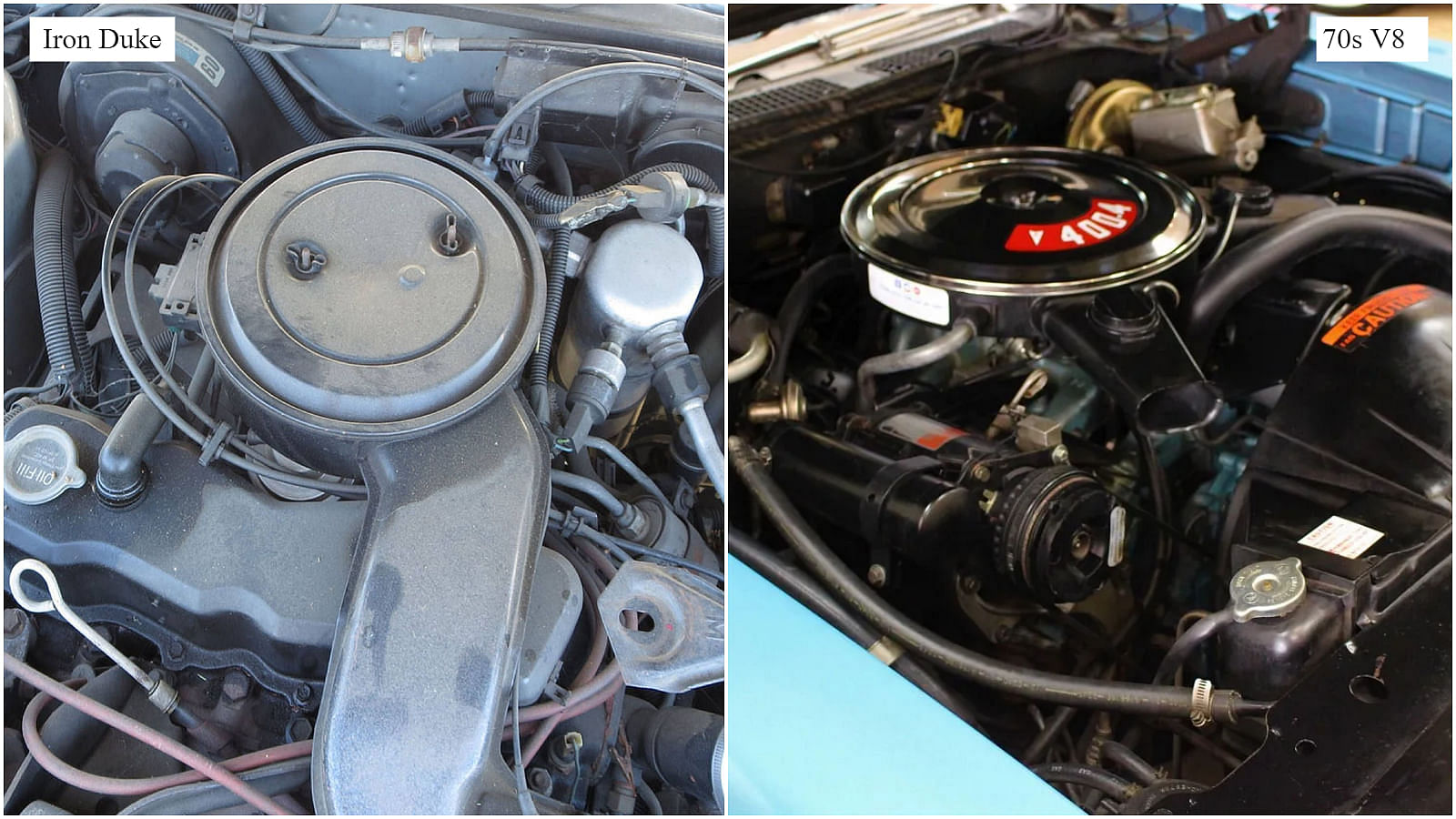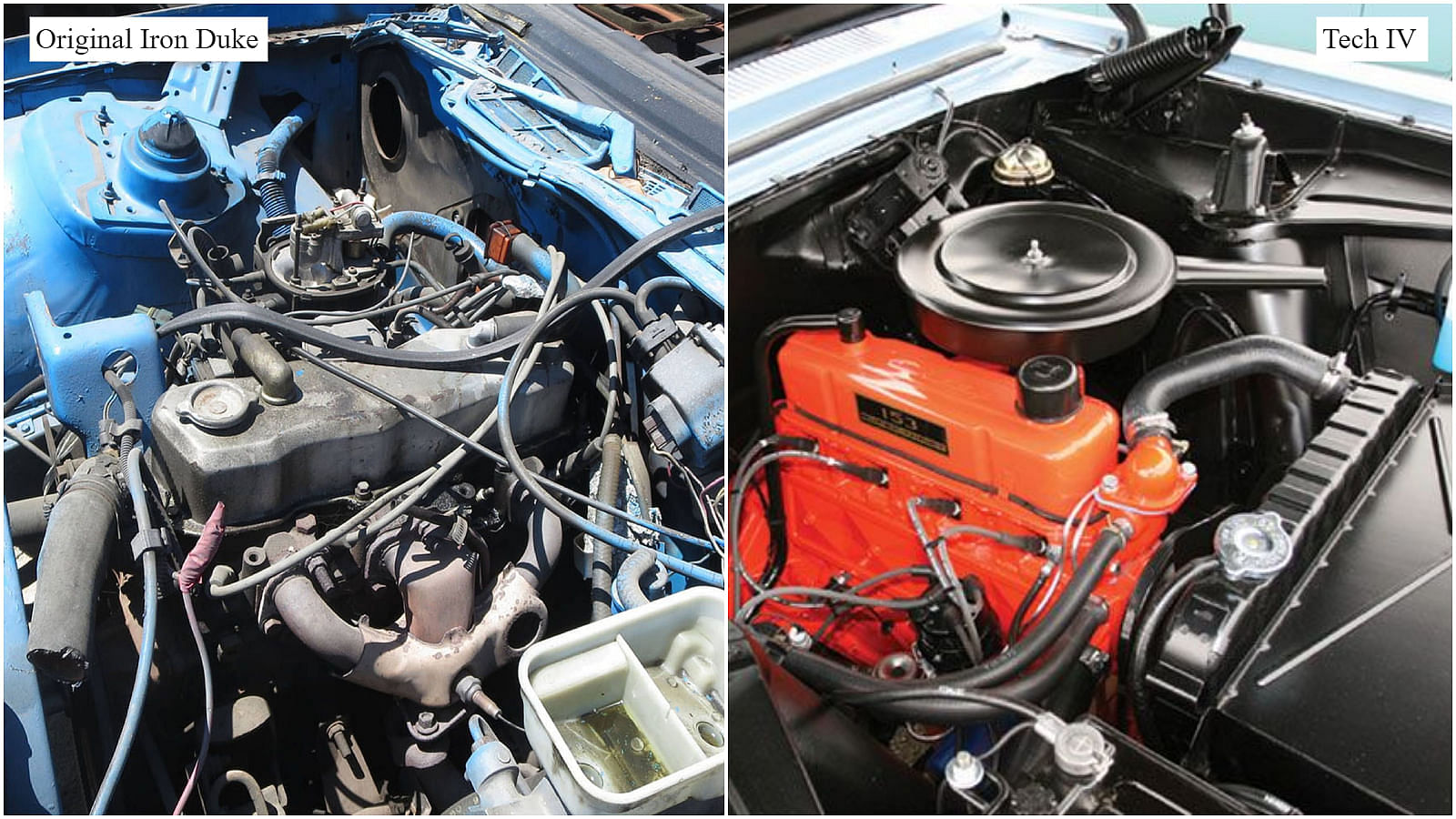What Was So Special About The 70s Iron Duke Engine?
Iron Duke is one of the most talked about engines known for fuel efficiency, and reliability. Though the power discrepancy was huge with its counterparts, GM introduced the engine across its vehicle lineup in the 80s. In some cases, the Iron Duke was criticized for jumping the guns above its pay grade but being the sole savior in the 70s energy crisis still has its name in today’s discussion.
Published March 18, 2024

The Iron Duke engine was the most reliable, and undeniable engine in the late 70s that powered scores of cars, SUVs, and trucks. Surprisingly, the Iron Duke does not get the admiration and spotlight it deserves when the discussion of a reliable engine is talked about. This famous Pontiac-built 2.5L engine has forced everyone to think about the value of reliability and longevity. What makes an engine sturdy is its simple design and the ultra-low-tech 4-cylinder Iron Duke engine has powered hundreds of thousands of GM cars, SUVs, and trucks after the 1973 energy crisis.
Debates on the Iron Duke propose two questions. Was it a disappointment despite the harsh situations that it was able to conquer? Or, was it a revolutionary engineering achievement that really came along to redefine the benchmark of a true symbol of reliable engines? These are for the gearheads to decide. Read on as we have put together some facts about it.

Pontiac Motor Division built the Iron Duke from 1977 to 1993. During its production time, it had different names like 151, 2500, Pontiac 2.5, and Tech IV that were based on its application purpose. The Tech IV was the performance-oriented version as the base 2.5L engine was mainly built to tackle the 70s energy crisis. When the 1973 energy crisis hit the market Pontiac understood the requirement for a small engine that was especially fuel-efficient yet extremely reliable. At that time there were only 5.7L, 6.6L, and 7.5L engines available from Pontiac. So, the biggest challenge for the division was to downsize the bulky V8 engine to a smaller displacement version. Thus, the Iron Duke came to life with its unmatched endurance and great fuel efficiency. It was so successful that GM introduced the Iron Duke to its auto lineup in the 1980s.

The Iron Duke delivered as it was supposed to. Amazing fuel economy and endurance were the Ace of GM’s engine vault but it came with a price. The simple engine design lacked power, delivering only 82 to 90 horsepower with 123 to 134 lb-ft of torque. The power difference with respect to the V8 engines was substantial and proved to be a downside. On the other hand, the Iron Duke weighed only 375 pounds which was pretty amazing. From 1977 to 1983 these engines featured a two-barrel carburetor and later throttle-body fuel injection. Engines built from 1982 to 1993 were known as Iron Duke Tech IV as it was built to bump up the power output to some extent. The Tech IV versions did boost up the power but only up to 110 hp. Its most notable appearance was on the Chevrolet Camaro from 82 to 85. Cars equipped with Iron Duke engines returned an average of 28 mpg in the city and 38-41 mpg on highways whereas other light-duty cars managed to deliver only 14 to 15 mpg at that time.

Upon the successful completion of Iron Duke, GM pushed the boundaries of applications which led to questionable decisions. As we have previously mentioned, the controversial appearance of Iron Duke in the 1982 Chevrolet Camaro was not the only one. Pontiac built a Super Duty race engine derived from the Iron Duke that powered racing cars in NASCAR's Charlotte/Daytona Dash Series, IMSA GT Championship, and even in the racing boats. Some other big ambitions that did not make sense to equip the Iron Duke with were Chevrolet Lumina, Pontiac Grand AM, and Chevrolet S-10. Some cases were exceptions like the Super Duty’s ARCA tour of duty that continued well into the 2000s.
After a solid 16-year run, Pontian finally put an end to Iron Duke’s production. As brilliantly as it served its purpose even after the crisis the Iron Duke never got the appropriate respect that’s due but it is still talked about today.
Write a comment
Comments
No Comments Yet






